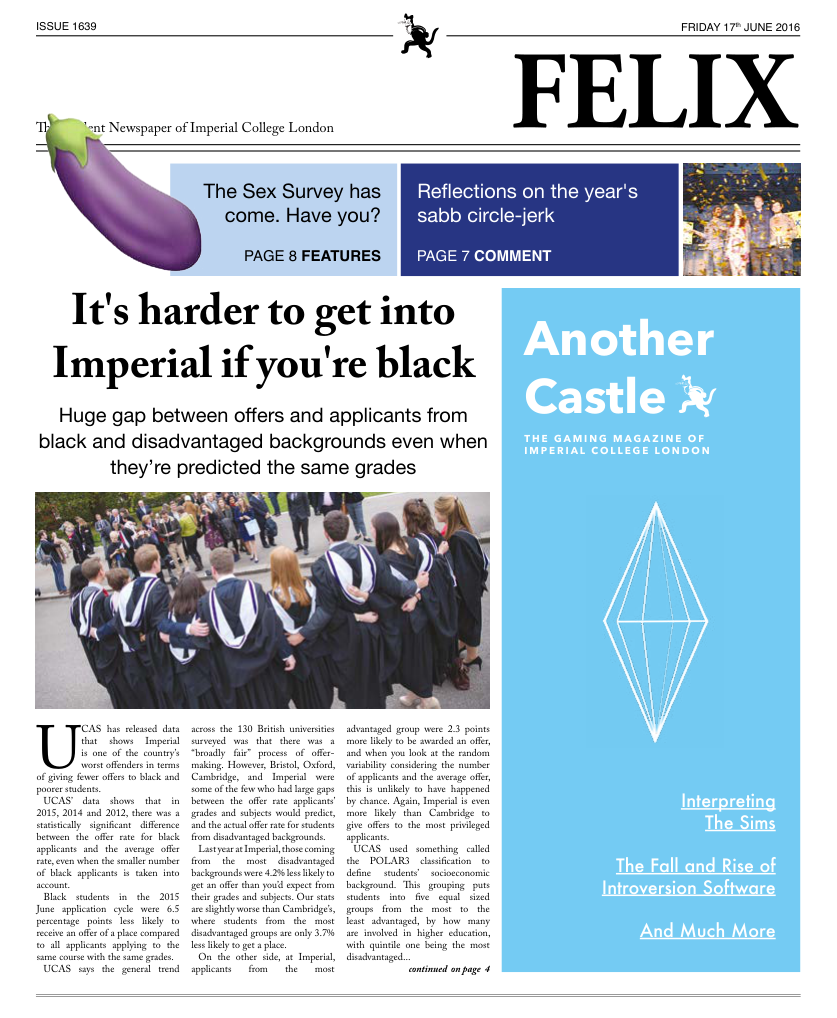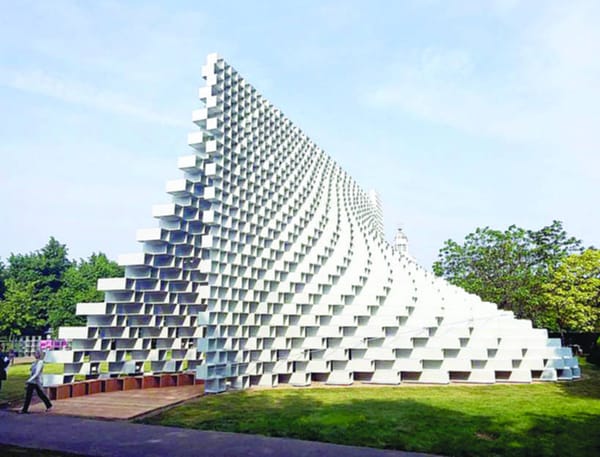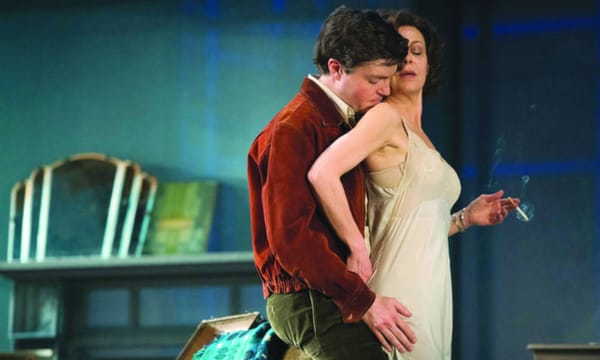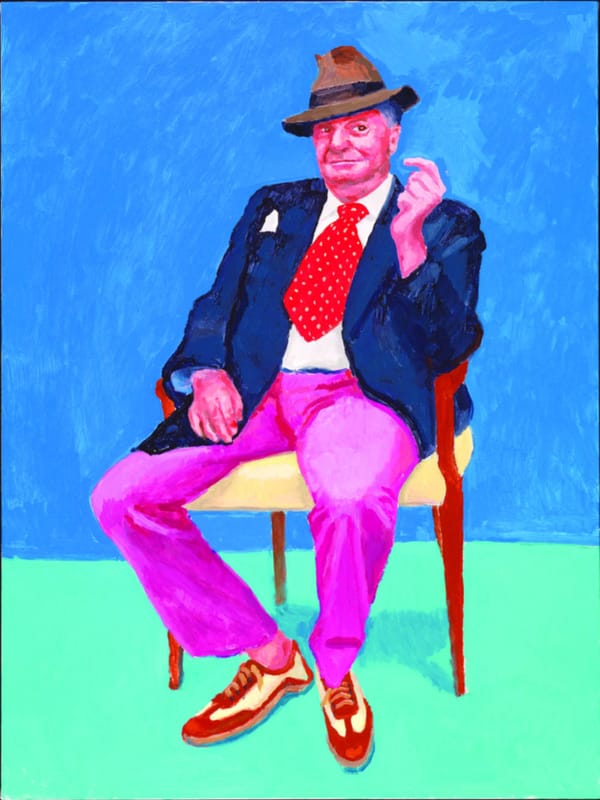Royal Academy Summer Exhibition
This summer’s headline event showcases the work of artistic duos
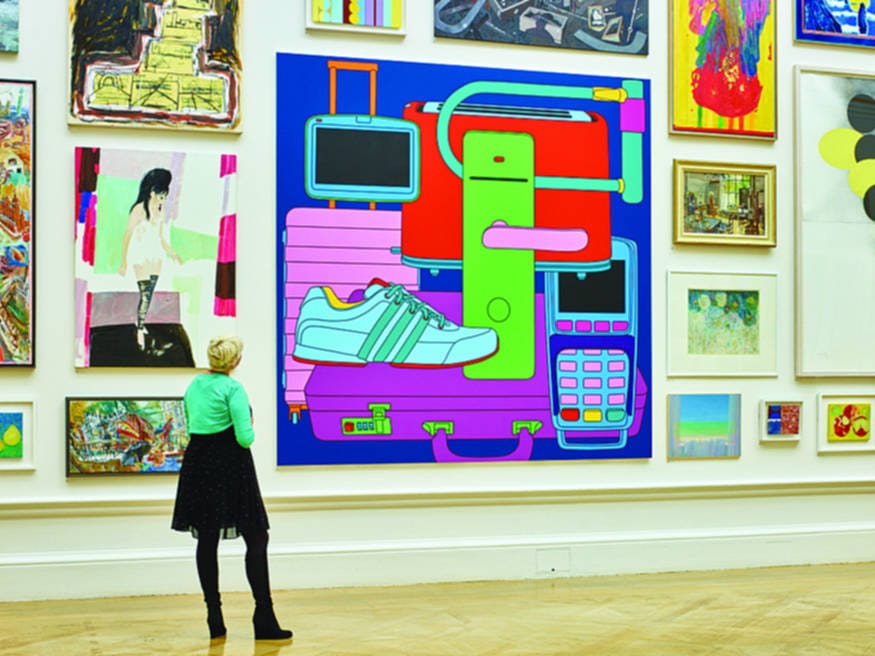
The Summer Exhibition at the Royal Academy is a bit like Glastonbury of the arts world, if the people who went were 97% white with a mean age of sixty. Along with fixtures like Wimbledon, it heralds in the summer, bringing together established artists from all the different disciplines: printmaking, painting, sculpture, video, while offering a platform for the work of lesser known artists and amateurs through the open submission policy.
Each year, a single sculpture in the courtyard sets the tone for each exhibition, and this year the space has been given to Ron Arad’s creation, ‘Spyre’. It is a towering, rotating artist’s mannequin arm that moves its joints at random The tip of the sculpture carries a small camera that records its field of vision. The swooping images of sky, building, and exhibition-goers, seen as though through the eyes of a bird flying, and diving through the courtyard are replayed on a giant screen that spans the entrance to the Royal Academy. It’s innovative, unusual, and focuses on the process of making art, a theme that the exhibition inside aims to replicate.
This year, the Summer Exhibition’s 247th iteration, has been coordinated by the British painter and sculptor Richard Wilson, who has chosen to focus the exhibition on artistic duos, Gilbert&George, Tim Noble and Sue Webster, and many more, who eschew the image of the artist as someone who works alone. The collaborative effort of creating art is highlighted in the central hall which contains the glittering neon sign by Noble and Webster, and also features a fossilized petrol pump by Allora & Calzadilla.
Increasingly, the Summer Exhibition mutates according to the coordinator in charge. Last year, Michael Craig-Martin painted the walls in neon colours; pink and turquoise. This year the walls have stayed white, presumably in order to let the works shine. Whether all the works on display are shining examples of great art is up for debate. The quality of the work varies wildly from room to room, which have been broadly designated by medium. Two print rooms lead onto a space for photography, another for architecture, whilst sculpture is placed throughout the gallery and gets a rooms all of its own.
Over 1200 works have been selected for exhibition. The sheer volume means that the works are hung piled on top of each other, several to one square foot of wall space. From a distance, this gives the gallery space a busy, vibrant feel, almost cosy. It does mean that the smaller works get lost amongst the bigger hangs, and can be easily missed.
The hang also reveals the skewed playing field the open submissions face. Works by the established artists are hung with more generosity, even when the work itself is lacking. This is particularly evident in the case of Tracey Emin’s quick drawings rendered in photogravure, a type of printmaking. These are hasty productions, fluid, but messy, wholly unexceptional. Had they been anonymised before being sent in, they would without a doubt never have been exhibited, yet they hang in pride of place. The frame is lined with tiny red dots that signify that nearly 50 people are willing to cough up over a thousand pounds to get their hands on an original Emin, regardless of quality.
That’s not to say there isn’t compelling, beautiful work to be found. Norman Ackroyd’s series of monochrome prints are as eye-catching as ever, and have attracted a series of little red dots themselves. I was a particular fan of Olwyn Bowen’s highly textured botanical paintings, as well as the minimalistic pencil drawings by the late Ellsworth Kelly. The Singh Brothers’ take on the subject of the London riots in the style of illuminated medieval manuscripts is a gorgeous swirl of mustard yellows, and scarlet with a sense of humour; Boris Johnson comes charging in from the top corner, broom in hand.
If the quality of the paintings has decreased from last year, then sculpture has fared better. Sure there’s the weird; a disquietingly fluffy tarantula, a grey, very detailed sculpture of Iggy Pop. In a conscious effort to be edgier, Michael Stokes has created tiny, very explicit, pornographic, sculptures. They are veering on the grotesque, and deeply uncomfortable to look at, but that’s beside the point. What’s worse is that they seem to serve no higher purpose than to shock with its X-rated content.
There are treasures to be found too. Aono Fumiaki’s beautiful rendering of old Japanese books moulding into old vases are small, but perfectly crafted. By contrast, Yinka Shonibare’s ‘Balloon Man’ is huge; a life-size, garishly dressed man with a round featureless head, trying to keep his balance on a tall white plinth as a bouquet of helium balloons tied to his waist threaten to lift him off the ground completely. Viewers of the BBC’s What Do Artist’s Do All Day? will have seen the process it took for the creation of this sculpture earlier in the year, and appreciated the small army of craftspeople it took to bring the sculpture to life from a series of sketches.
For others, it is the placement that allows the work to carry weight. Laura Ford’s ‘Silent Howler’ is a bronze of a small girl sobbing into her hands. She’s placed just at the edge of a doorway, head buried in her hands, looking impossibly forlorn. One could almost mistake the sculpture for a real child who’s lost their parents in the bustle of the crowd.
One of the most memorable is a shipping container stands in the middle of another room. Look closer, and there are several tiny round windows to peer through. The scene inside the container is one of destruction. A tiny scaled down suspension bridge has collapsed, tiny scaled down cars are either falling into the river below, or stand abandoned at the side. Tiny, scaled down police officers survey the damage. Blue lights flash. This glimpse into a Lilliputian land is oddly transformative.
For me, the most impressive was another sculpture. Kutluğ Ataman’s ‘The Portrait of Sakıp Sabancı’ hangs over gallery one like an enormous blue cloud. It is vaguely reptilian, made of ten thousand scales of LED monitors that glow and flicker to display a mass portrait of all the people that the late Turkish businessman Sakip Sabanci encountered in his life. There are family members here, friends, colleagues; the whole population of his life. It took three years to make, which in some ways seems an extraordinarily short amount of time to pull off such a feat. It showcases powerful art can be when technology and true artistic vision come together.
It also highlights the best that the Summer Exhibition can be. The walls of the gallery in which Kutluğ Ataman’s work is housed are densely filled with work from the open submission, many of it as differet as you can get the sculpture, watercolour landscapes, traditional domestic works. The Summer Exhibition skips through the different styles, and movements of art lithely, sometimes, stumbling, sometimes soaring. It can be overwhelming to walk into a gallery that trying to be everything to everyone, but it generates the spirit of discovery. It allows visitors to enjoy art they wouldn’t have paid to see exhibited on its own, and gives established artists freedom to explore beyond their usual techniques and subject matter. You might not find yourself enjoying everything in the Summer Exhibition, but that’s the point. It’s celebratory, filled with unusual work displayed in unusual ways, and always surprising. That chance of discovering something completely unexpected alone is worth the ticket price.
Until 12th August at the Royal Academy. Tickets from £12.

